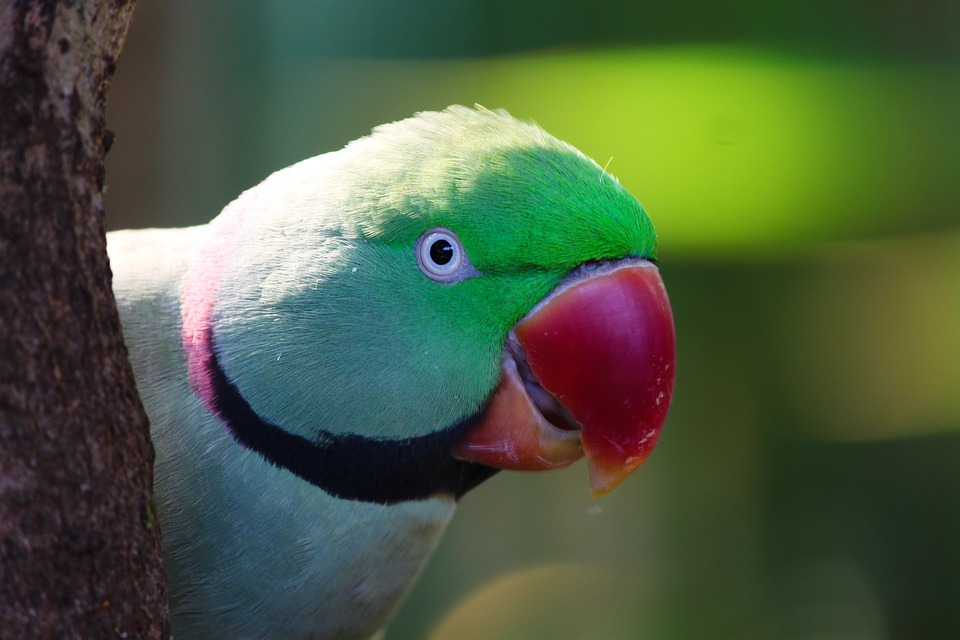Parrots are fascinating creatures known for their vibrant colors, intelligence, and unique ability to mimic human speech. However, understanding parrot behavior goes beyond their talking abilities. By delving deeper into their natural instincts, body language, and social interactions, you can develop a stronger bond with your feathered friend. In this article, we will explore various aspects of parrot behavior and shed light on their talking abilities.
One of the key aspects of parrot behavior is their natural instincts and social behavior. Parrots are highly social animals that thrive in flocks. Understanding their flock mentality is crucial in providing them with a fulfilling and enriched environment. Social interaction with other parrots or even with their human caretakers is essential for their emotional well-being. Creating a trusting relationship with your parrot through bonding activities and positive reinforcement is crucial for their overall happiness and mental stimulation.
Body language is another important aspect of parrot behavior. By observing your parrot’s feather positioning, you can understand their mood and emotional state. For example, flattened feathers may indicate fear or aggression, while raised feathers indicate excitement or curiosity. Eye constrictions and dilations can also provide insights into a parrot’s feelings. Head movements and wing flapping are other ways parrots express their emotions and can indicate excitement or anxiety.
Now, let’s delve into the fascinating topic of parrot talking abilities. Parrots are among the few animal species capable of vocal learning, which means they can mimic and imitate sounds, including human speech. This ability is attributed to the structure of their vocal organs and their highly developed auditory and motor systems. Parrots can learn to mimic human speech through consistent training and exposure to spoken language.
However, not all parrots have the same talking abilities. Factors such as age, breed, and individuality play a role in determining a parrot’s linguistic skills. Younger parrots tend to be more receptive to learning and may start mimicking sounds within a few months. Patience and consistent training are key, as it can take up to a year or more for a parrot to develop a significant vocabulary.
Training techniques can be used to encourage and enhance a parrot’s talking skills. Positive reinforcement, such as rewarding your parrot with treats or praise when they make attempts at mimicking sounds or words, can be highly effective. Playing recordings of human speech can also help parrots learn new words and phrases.
Now, let’s address some frequently asked questions about parrot behavior. Not all parrots have the ability to talk. While some parrot species, such as African Greys and Amazon parrots, are renowned for their talking abilities, others may only mimic a few sounds or remain mostly silent.
The time it takes for a parrot to learn to talk can vary greatly. Generally, younger parrots tend to be more receptive to learning and may start mimicking sounds within a few months. However, patience and consistent training are key, as it can take up to a year or more for a parrot to develop a significant vocabulary.
Parrots often repeat certain words or phrases to seek attention, express their needs, or engage in social interactions. Some parrots may also repeat certain sounds simply because they find them amusing or rewarding.
While parrots can mimic human speech, their understanding of the actual meaning behind the words is limited. They associate certain sounds or phrases with specific actions or reactions, but their comprehension is primarily based on context and learned associations.
Not all parrots are inclined to talk, and it’s important to respect their individuality. However, you can try various techniques to encourage vocalization, such as playing recordings of human speech or rewarding attempts at mimicking sounds. Patience and positive reinforcement are key to fostering a comfortable and trusting environment for your parrot.
By gaining insights into parrot behavior, you can establish a strong bond with your feathered companion and provide them with a fulfilling and enriched environment. Understanding their talking abilities, along with their natural instincts and body language, will help create a harmonious relationship based on trust and communication.









